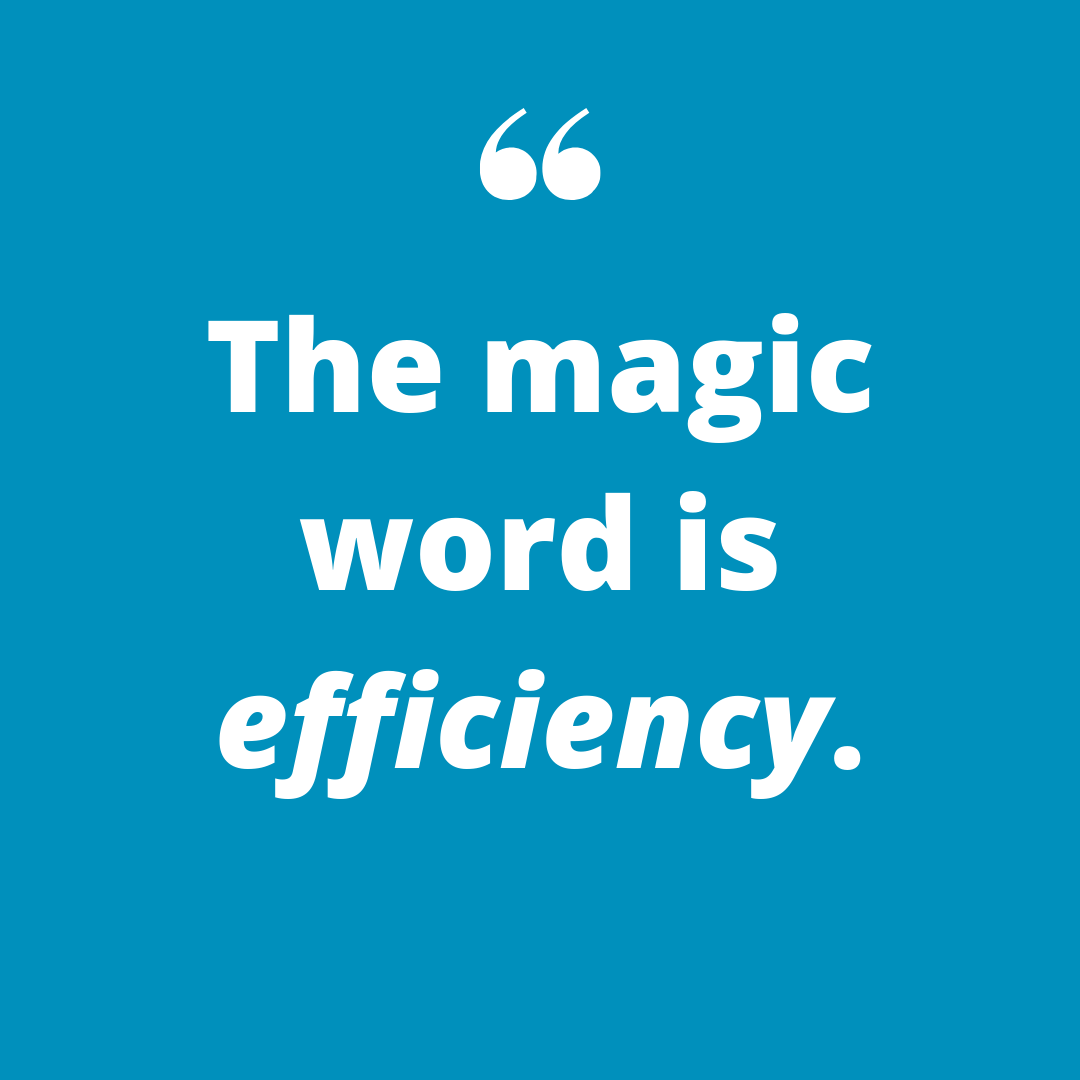 Let me shed some light on illumination for your company. After all, we can’t work in the dark. It goes without saying: Our work becomes more difficult if we conduct it under bad lighting.
Let me shed some light on illumination for your company. After all, we can’t work in the dark. It goes without saying: Our work becomes more difficult if we conduct it under bad lighting.
Your monitors in your business and your TVs at home most likely are lit with LED technology. Both of my family’s cars have LED headlights, and our house is now almost completely converted to LED. Each of these examples has convinced me of the advantages of LED. Now let me convince you.
The time has come to tackle my biggest conversion yet: Pictographics. Our shop is 20,000 square feet with a 3000-square-foot print room, 11,000-square-foot warehouse and finishing area, and 6000 square feet of offices. There are 362 non-LED lightbulbs in our building. Twenty-eight of the fixtures in our warehouse and print room are considered high-bay lights because they’re suspended 16 feet from the ceiling. They each use a 400-watt metal-halide bulb. The remainder of our lights rely on various shapes and sizes of fluorescent. Retrofitting all of these hundreds of lights will take research, time, and money – but just how much?
Shades of White
What are some of the variables we should consider when lighting work spaces in our industry? We’re a color business, so the first consideration should be the color of the light. It’s important to understand “white” can mean a lot of different things in terms of light, just like there are many Pantone colors that fall under the definition of white.
Color in lighting is determined by color temperature based on a scale of 1000 to 10,000 Kelvin. However, in commercial and residential lighting, the scale falls into the 2000 to 6500 range, or 2000K to 6500K. Fun fact: This temperature calculation came from what color metal glows when it’s heated. Another fun fact: The surface temperature of the sun is about 5780 Kelvin. (Hint: Remember that number.)
At the lower end, from 2000K to 3000K, the light emitted is referred to as “warm white” and ranges in color from an orangish white to a yellowish white glow. Colors between 3100K and 4500K are called “cool white” or “bright white.” Lightbulbs within this range will emit a more neutral white light and may even have a slightly blue tint at the higher end. Light that’s 4500K and above falls into the “daylight” color temperature. This range emits a blue-white light that is similar to walking out into the bright sunlight at midday – good selfie lighting, I hear.
Advertisement
Some of you have light booths in your shops as part of your color-matching process. These booths are equipped with standardized lighting to eliminate the variability in ambient lighting. What’s the color temperature of the lights in these? Booths are typically designated as D50 and D65. D50 is used as a white point in the RGB color gamut and D65 is used as the white point in CMYK; D50 lighting is 5000K and D65 is 6500K.
In our shop, we want to inspect print color throughout the process of designing, proofing, printing, and finishing. For this reason, many years ago, we decided to paint all of our office walls a neutral gray and install 4000K fluorescent lights. We were trying to get closer to D50 in our environment to help us perceive colors better during the production process.
Unfortunately, our printing, warehouse, and finishing areas used high-bay metal-halide lamps, which don’t provide the color accuracy and range of our office lights. We have recently ordered 5700K LED lights as a total retrofit for these areas. We are also retrofitting all of our office 4000K fluorescents with LEDs in the D50 and D65 range. If you take D50 and D65 and split the difference, you come up with 5750K, which is what we have chosen for our building lights. (And, as you’ll recall, roughly the temperature of the sun.) In effect, we’re approximating light booth lighting throughout our building for on-the-fly color monitoring during the production process.
It's All About the Bill
The magic word is efficiency. What does that mean when it comes to lighting? A few things. With traditional lighting technology, the average bulb lasts around 6000 to 15,000 operating hours. We calculated the life of our new LED high-bay lamps and discovered we would have to purchase six to eight metal halides to match the lifespan of a single LED. LEDs can last 50,000 to 100,000 hours or more.
When it comes to pricing, it’s important to remember the cost of the bulb replacement reflects not only the bulbs, but the associated maintenance cost over time. Most high-bay lights are 14 to 20 feet in the air, so it isn’t a simple matter to change them out if you don’t have a lift on site. With LED’s long life, this issue is less frequent.
Where LEDs really shine (pun intended) is in energy efficiency. They waste very little energy in the form of infrared radiation, aka heat. If your lighting system generates a significant amount of heat, that’s bad news for your HVAC all year long, with the possible exception of winter. And LEDs emit light directionally: typically 180 degrees vs. 360 degrees for traditional lighting. This means you can direct the light where it’s most needed.
Advertisement
What About the Capital Expense?
 Earning back the initial cost of retrofitting your building can happen surprisingly fast. Whether you own or lease, typically you are the one responsible for your energy expenses. The upfront cost of new bulbs can pay for itself rather quickly.
Earning back the initial cost of retrofitting your building can happen surprisingly fast. Whether you own or lease, typically you are the one responsible for your energy expenses. The upfront cost of new bulbs can pay for itself rather quickly.
In our print room and finishing area, we have 28, 400-watt metal-halide lamps we’re in the process of replacing with 120-watt LEDs. The new lamps will give off the equivalent amount of illumination in terms of brightness, but there’s no comparison to the improved quality of the light. Right now, with all the lights on, we’re burning 11,200 watts. With our completed retrofit to LEDs, we’ll be burning 3360 watts. That’s a savings of 7840 watts or 70 percent. The savings on your power bill will be contingent on the cost per kilowatt in your location, but it will be significant.
Another cost factor is the shrinking prices of LEDs. Over the past decade, they’ve fallen by 85 percent. We ordered ours online and our upfront cost for the 28 high-bay lights is under $3000. Now, I say upfront cost because we anticipate our local utility company will cut it in half with rebates based on the wattage reduction we will have achieved. We’ll recoup that cost in about one fiscal quarter with reduced electricity expenses. For those of you who are up and running 24/7 (which is our goal), your ROI will be even faster.
We don’t have all the costs figured out for replacing the office fluorescents – there are 334 of them. Because of the quantity, we will triage the problem. We’ll go after the lamps that are on regularly, consuming the most electricity, and have the greatest exposure to print color viewing. We’ll work down from there. This will give us the most initial “bang for our buck.”
Added Perks of LEDs
An indirect expense savings may come from catching color mistakes early in the process. The most expensive mistake we can make is to discover errors after all the printing and finishing is complete.
When it comes to sustainability, it’s important to note fossil fuels (coal, natural gas, and petroleum) account for 63 percent of America’s electricity generation. Shockingly, about 30 percent of that total is generated by burning coal. By reducing your electrical consumption with LEDs, you’re in turn reducing the burning of fossil fuels. (This is a topic that could be its own column, so we’ll stop there for now.)
Advertisement
So, why should you retrofit your building with LEDs? First, the quality of the illumination will dramatically improve and you’ll have near “light booth” color throughout your facility. This will help you catch color faux pas throughout the production process.
Second, you can reduce your operating expenses through reduction of your monthly electricity bill – not only from the energy savings from more efficient lighting, but also from reducing HVAC costs during the warmer months. Plus, your maintenance expenses for replacing lights will be reduced significantly over time.
Finally, if you care about such things (which my wife and co-founder, Sue, and I do) you can have that warm, fuzzy feeling that comes from knowing you’re doing your part to take care of our planet. ‘Nuff said.
Read more Inside Output from Craig Miller.


 Best of Wide Format2 months ago
Best of Wide Format2 months ago
 Best of Wide Format2 months ago
Best of Wide Format2 months ago
 Columns2 months ago
Columns2 months ago
 Blue Print2 weeks ago
Blue Print2 weeks ago
 Best of Wide Format2 months ago
Best of Wide Format2 months ago
 Best of Wide Format2 months ago
Best of Wide Format2 months ago
 Best of Wide Format2 months ago
Best of Wide Format2 months ago
 Best of Wide Format2 months ago
Best of Wide Format2 months ago
 Let me shed some light on illumination for your company. After all, we can’t work in the dark. It goes without saying: Our work becomes more difficult if we conduct it under bad lighting.
Let me shed some light on illumination for your company. After all, we can’t work in the dark. It goes without saying: Our work becomes more difficult if we conduct it under bad lighting.  Earning back the initial cost of retrofitting your building can happen surprisingly fast. Whether you own or lease, typically you are the one responsible for your energy expenses. The upfront cost of new bulbs can pay for itself rather quickly.
Earning back the initial cost of retrofitting your building can happen surprisingly fast. Whether you own or lease, typically you are the one responsible for your energy expenses. The upfront cost of new bulbs can pay for itself rather quickly.













